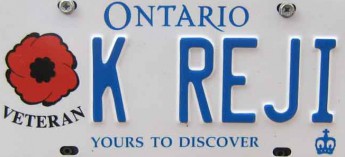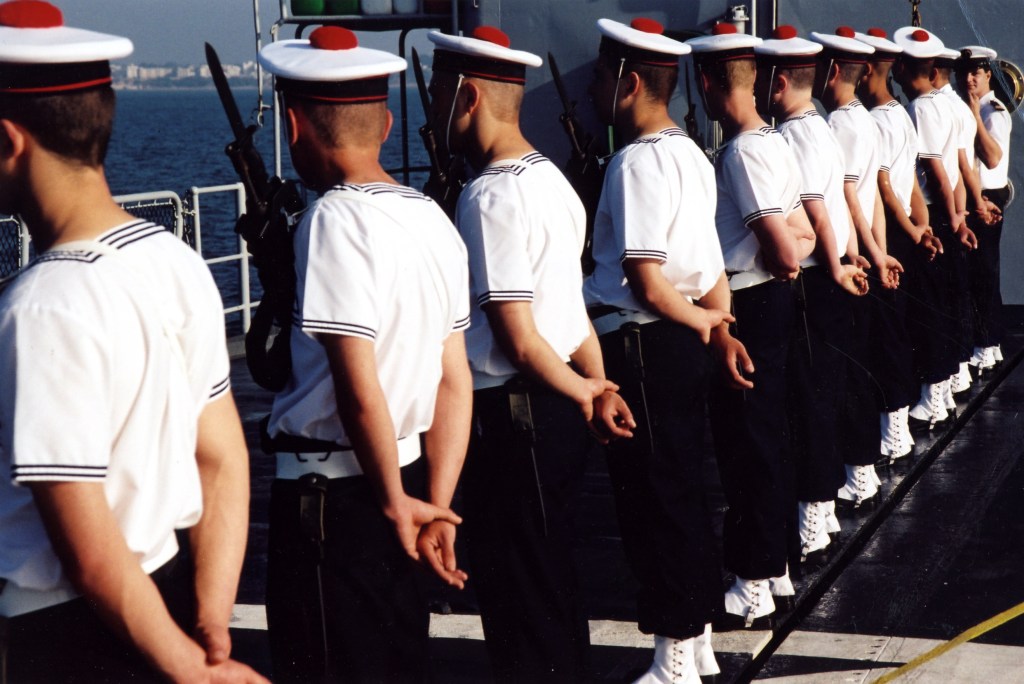
The House of Commons of the Canadian Parliament voted unanimously on May 14, 2019 to apologise to Vice Admiral Mark Norman, Vice Chief of Defence Staff, for his legal ordeal with a resolution that “ The House recognise Vice-Admiral Mark Norman for his decades of loyal service to Canada, express regret for the personal and professional hardships he endured as a result of his failed prosecution and apologise to him and his family for what they experienced during their legal conflict with the government.”
What was remarkable was that the resolution was moved by a member of the opposition Conservative party and passed by the house duly supported by the ruling Liberal party whose government was mainly responsible for the Admiral’s ordeals. Indeed, it was an unmistakable sign of a healthy democracy. The passage of such a resolution was a tacit admission of error on the part of the Liberal government, however, much one may argue that the investigation and subsequent procedure was carried out by independent agencies.
The Canadian Prime Minister Justin Trudeau had a hard time saying sorry to Vice-Admiral Mark Norman. He refused to apologise when asked directly to do so by Conservative Leader of the Opposition, Andrew Scheer. Trudeau’s response was to blame Stephen Harper, his Conservative predecessor, for awarding a defence contract, in which the admiral allegedly had an interest.
Scheer pointed out the double standard and launched a vicious attack on the Prime Minister for his willingness to spend untold millions of Canadian tax payers’ money for prosecuting a righteous public servant, Vice Admiral Norman who was a national hero.
When the resolution was put to vote, Prime Minister Justin Trudeau had already left the chamber and Defence Minister Harjit Sajjan was absent.
In stark contrast to the passage of this apology resolution, I was reminded of the several instances of senior officers of the Indian defence forces being convicted by court martial and cashiered/ dismissed from service in disgrace. In quite a few instances the higher courts of appeal have rejected the court martial verdicts and restored the lost honour of these officers. However, there was not a single case of an apology from anyone, not even the concerned service Headquarters to the individual.
At the time when charges were pressed against Vice Admiral Mark Norman, he was the Vice Chief of the Canadian Defence Forces, the Number 2 man in the military hierarchy. For a western democracy, it was perhaps a rare incident of such nature.
What was the case against Vice Admiral Mark Norman?
The Canadian Navy urgently needed a supply ship as HMCS Protecteur, Canadian Navy’s only supply ship was engulfed in a blaze in February 2014, rendering it unserviceable. The ship had to be towed by a US Naval ship to Pearl Harbour. The Conservative government in power then placed an order with Quebec-based shipbuilder Chantier Davie Canada Inc (Davie) to convert a civilian cargo ship into a military supply vessel at a cost of $668-million.
Prior to the award of the contract, the Conservative Government changed the federal procurement rules to allow a single vendor contract without competition, which was questioned by the incoming Liberals. The Conservative Defence Minister defended the decision to amend the rules to facilitate the single vendor deal, as the Canadian Navy wanted a supply ship urgently and the normal process would involve 30 to 36 months.
In November 2015, the new Liberal government apparently took a decision to pause and review the deal. The information was leaked to James Cudmore, then a CBC reporter. Following the leak, there was a public outrage in Quebec. The liberal Government then backtracked and quickly approved the deal. However, furious with the leak, the government ordered the Royal Canadian Mounted Police (RCMP) to investigate the matter.
In January 2017, Vice Admiral Mark Norman was suspended from service and more than a year later subsequent to raids at his residence, the RCMP charged Vice Admiral Mark Norman with breach of trust, alleging that he leaked cabinet secrets to an executive at Davie and a journalist. In its court brief, it was alleged that Norman ‘knowingly and deliberately‘ leaked this information and breached cabinet secrecy on 12 separate occasions between October 2014 to November 2015.
Norman vehemently denied any wrong doing pleaded not guilty to the charges and said that he acted with integrity, ethically and “in the best interests of the Royal Canadian Navy, the Canadian Forces and, ultimately, the people of Canada.”
Government’s case against Norman unexpectedly began to collapse in March 2019, partly under the weight of information from several former Conservative cabinet ministers and staffers. The new evidence, gathered by Norman’s lawyers and presented to the court on March 28 included some documents which were not uncovered during the investigation, something Norman’s lead defence lawyer blamed on government obstruction. The independence of the investigation carried out by the RCMP also came into question.

The case took a turn on its head the moment Liberal MP Andrew Leslie announced his retirement from the federal Liberal caucus and expressed his wish to testify for the defence in Vice-Admiral Mark Norman’s trial. His testimony would have been politically embarrassing for the government, coming from the ruling party MP. It was a political ‘hara-kiri’ for Leslie who said that he will not be running for re-election in 2019.
Who is Liberal MP Andrew Leslie? Why was he defending Vice-Admiral Mark Norman?

Veteran Lieutenant General Andrew Brooke Leslie served Canadian Army for over three decades. He was an artillery officer commissioned in 1981 and rose to the top of the hierarchy to be appointed as Chief of the Land Staff in Jun 2006. He retired in September 2011 and was elected MP of Liberal Party in 2015. Prior to his retirement, he was assigned the task of making a ‘transformation report‘ of the Canadian Defence Forces. On this task Admiral Mark Norman was his deputy and part of the team that submitted the report. So Admiral Mark Norman was a subordinate well known to the General.
While appearing as defence witness, Leslie would have no specific knowledge about the allegations that led to the charge against Norman, but would have insight into how the case was treated by the Liberal government, both during the investigation and throughout the pre-trial phase. The Admiral’s legal defence had often often made the accusation of political interference which may well get substantiated by the General’s testimony. Also, knowing the nuances of the procurement process and probably having faced frustrations similar to the problem of procuring a supply ship may well state in testimony that the Conservative government decision to amend the procurement rules was well justified. All these would surely have been politically embarrassing for the government.
The General acted like a General to defend the honour and well being of his subordinate, a comrade in arms, even at the cost of his political future. This is a classic case of military loyalty to the organisation and ultimately to the Canadian nation in a larger sense. Notice that there was a personal cost involved and therefore becomes all the more praiseworthy
At the end of it, the government was forced to drop all charges against Vice Admiral Mark Norman. What caused the prosecution to drop the charge is not yet known. It is obvious that for the conviction to stand, the aspect of personal gain and damage to public interest would both require to be proved. There is no indication of any available evidence towards this. In the face of mounting public statements from then Conservative cabinet ministers and staffers that the Admiral’s recommendations for single vendor deal with Davies was made only in the best interests of the Canadian Navy, the prosecution was probably left with no alternative but to drop the charges.
The Canadian public will come to know of the reasons that prompted the state to drop the charges only if Norman ever files a civil lawsuit against the government for the ordeal that he faced. Norman said he has an ‘important story’ to tell Canadians, which he will be sharing in the coming days.
On being exonerated of all charges, Vice Admiral Mark Norman said “I am confident that at all times I acted with integrity, I acted ethically and I acted in the best interests of the Royal Canadian Navy, the Canadian Forces and, ultimately, the people of Canada. The alarming and protracted bias of perceived guilt across the senior levels of government has been quite damaging and the emotional and financial impacts of the entire ordeal have taken a toll.” Like a true soldier he did not blame anyone for his ordeal and was preparing to get back to work immediately.
Meanwhile, the supply ship that Vice Admiral Norman fought for, MV Asterix (It is not christened HMCS as the ship is only leased by the Canadian Navy. It is not commissioned by the Navy and is manned by Naval and civilian crew), has been in service for more than a year, re-fuelling Royal Canadian Navy ships around the world. Many in the Canadian Navy say that conversion of the Asterix from a merchant vessel to a Naval supply ship is a rare example of a defence project that was delivered on time and on budget.
So, in the face of a decision which apparently went right all the way, pressing charges against a man who recommended the course of action probably seemed meaningless. Was it simply a case of a political squabble between the Liberals and the Conservatives into which a man in uniform was unwittingly drawn? We shall probably never know!






